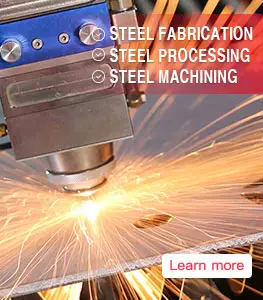Welcome to BBN Steel Materials Factory
s355ml vs s355j2 carbon steel

The primary difference between S355ML and S355J2 carbon steel is the chemical composition. S355ML steel is a thermomechanical rolled weldable fine grain structural steel to EN10025-4. It has increased yield strength of minimum 355 N/mm² and impact energy of minimum 27 J at -20°C. It is suitable for low temperature applications and is often used for welded structures in bridges and similar structures where notch toughness is important. S355ML steel has a slightly higher carbon content and a higher yield strength than S355J2. This makes S355ML more suitable for low temperature applications. It also has a higher impact energy and improved notch toughness, which makes it suitable for welded structures in bridges and similar structures.
EN10025 S355J2 carbon steel is best suited for general engineering and construction applications, due to its lower yield strength, lower impact energy and lower notch toughness. S355J2 is a carbon steel grade in the EN 10025-2 standard. It is a non-alloy structural steel with specified minimum yield strength of 355 N/mm². It is widely used in engineering and construction industries, and is readily available in a variety of forms such as plates, sheets, coils and sections. The chemical composition of S355J2 includes a small amount of carbon, around 0.20-0.22%, along with manganese, phosphorus and sulfur. It also contains silicon, copper, chromium and nickel in trace amounts. In terms of mechanical properties, both S355ML and S355J2 have a yield strength of 355 N/mm² and a tensile strength of around 470-630 N/mm². They both have a thickness of 20mm and a temperature of 20°C. The elongation property of S355ML is around 18-21%, while that of S355J2 is around 17-20%.
EN10025 S355ML carbon steel and EN10025 S355J2 carbon steel are both carbon steels that are used for a wide range of applications. Both of them have a minimum yield strength of 355 MPa and are primarily used in the construction industry and for shipbuilding. Also, both of them have excellent weldability properties, making them ideal for components with complex shapes. Despite its higher ductility, S355ML is an inferior choice to S355J2 when looking for tougher mechanical properties. This is due to the higher tensile strength of S355J2, which is 50 J/mm2 higher than that of S355ML. This translates to a higher resistance to cracking when the material is put under pressure.
.webp)
.webp)
.webp)
.webp)
.webp)
.webp)
.webp)
.webp)
.webp)



Leave a Message